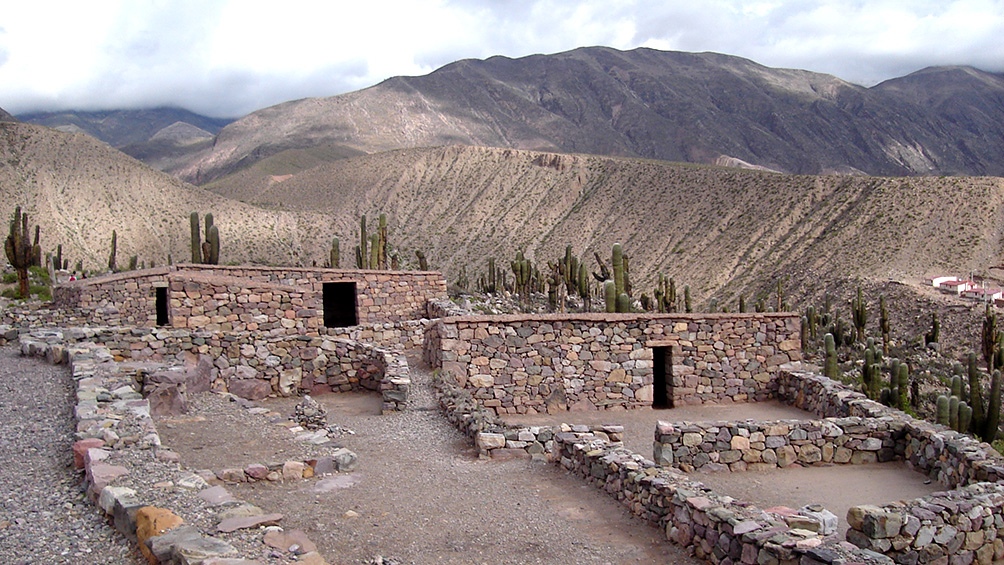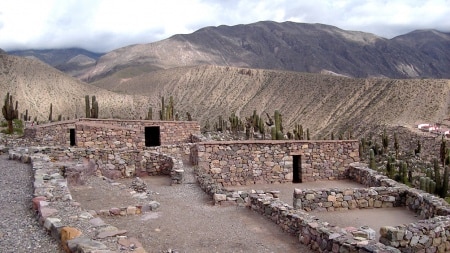 El Pucará is the only site investigated for 100 years. (Telam file)
El Pucará is the only site investigated for 100 years. (Telam file)
Pucará de Tilcara, an architectural setting that allows one to delve into the way of life of the first settlers of the place and the knowledge they inherited through orality, it has become a site to revalue cultural diversity in the region and the history of archeology in the country, revealing the evolution of a rich dialogue between academic and indigenous knowledge.
Old recreated houses, squares, tombs and ceremonial spaces of those who inhabited the Pucará (fortress), are part of what is also called antigal (old town) or high altitude citadel, in which the first investigations date back to 1908 by researchers from the Faculty of Philosophy and Letters of the University of Buenos Aires (UBA).
Such researchers would later promote the idea of a museum complex that included the reconstruction of the site, in a work that could not have been otherwise than collective, with local indigenous people, which led to readings that were transformed and agreed upon on the various social and cultural processes, and even on current demands.
“El Pucará is the only site investigated for 100 years, today with a look in which we participate and contribute knowledge”, he commented, in dialogue with Télam, Horace Galanwho defines himself as an “intellectual Indian” and has been working for seven years as part of a group of five native guides from the area.
“We belong to the native peoples here and from that point of view we try to articulate all the ancestral knowledge that we have learned at home with the technical knowledge of the academy,” he added about the “pedagogical task” that they assume for the visitors, in which, he said, he even advances in remembering his childhood experiences on the site.
Regarding the guide work, in which points of interpretive interest are covered along delineated paths, all over an hour and a half, Galán indicated that the idea is for the groups to understand that “indigenous knowledge is as valid today as academics, nothing more than that they were historically invisible, due to that construction of the ignorant, ugly, brutish other, that of the raid.”
The occupational process that is addressed dates from between the end of the 11th century and the moment of Spanish-indigenous contact, in the 16th century.
“We talked about the pre-Inca people, who invented the llama, many ancient rituals and technologies,” Galán said regarding the information they provide, which “is housed in the memory of the people and translates into practices such as the use of coca leaves, the corn they grow, potatoes, and everything handed down by grandparents.”
“It is a great life opportunity to be guiding in this place. Being here is to make an autobiographical story, but thought in an ethnic sense, where there is a collective memory that I transmit to the people”, he valued the role he assumes.
“And in the Andean world -he continued- orality is essentialThat is why writing a story here is very important, and above all from a place of power and with a legal framework in the country that recognizes the pre-existence of indigenous peoples and that is accompanying this ancestral knowledge.”
“People are beginning to understand that there is a modern Argentina in which identity was a monolithic construction, that the original peoples have ways of knowing, understanding and organizing the world in a different way, and that today there is a reflection on it,” he completed.
In this sense, he also valued the collective work on the site, which “was in ruins” when the first researchers arrived to “clean and lay the foundations of archaeology” and which today adds up to 100 years of history that reflect “how the perspective of archeology and anthropology changed, and therefore the concept of Indian as well.”
Attraction in the Quebrada
The visit to the Pucará de Tilcara consists of a short tour, for those who have some physical difficulty, and a long one, which is recommended to be done with one of the guides but can also be done on your own, by reading a brochure that is handed out and posted posters that mark the points of interest.
For conservation measures, Only up to 250 people are allowed to enter at any one time.
In high season, the entry of 1,500 people a day is recorded, according to estimates, also in dialogue with Télam, Inés González de Prada, coordinator of the Tilcara University Center (CUT)headquarters of the Faculty of Philosophy and Letters of the UBA and of which the visited archaeological site “Pucará De Tilcara” is a part.
To enter the place there is a general admission of 1,500 pesos, although it is free both for those who reside in Jujuy, as well as for UBA researchers, teachers, non-teachers and students. Children up to 12 years old do not pay either, while there is a special rate for contingents of schools and retirees who arrive from other provinces.
As a space with a committed educational mission, González de Prada commented, an agenda with special visits is encouraged, for example for the Night of the Museums, and also adjusted to the demand of groups of students from all over the country who come to the place, which is achieved through a reservation system that is enabled online.
“We are always looking to make this crossing of knowledge available to visitors, the most important thing is the interpretation of the present in relation to an inhabited past”, González de Prada valued in this regard.
“The site, in addition to being a place that allows you to think about the way of life in a specific temporality, is a long timeline on the archaeological discipline, on the conformation of science in Argentina,” González de Prada completed, also highlighting the more than 100 years of history of academic and territorial work in the place.


